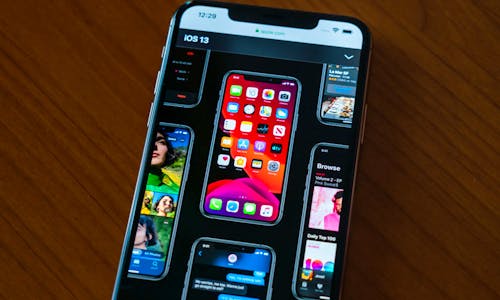The iPhone 6 and iPhone 6 Plus are pretty much identical, apart from their screen sizes and cameras, right Wrong. While both devices are powered by the same processor, Apple’s design choices mean the performance each device offers can be wildly different depending on how they’re used. Here’s how:

Both handsets are powered by Apple’s new A8 64-bit processor, which replaces the A7 found in the iPhone 5S. The A8 is the faster of the two, as you’d expect; Apple claims a 25 per cent improvement in day-to-day productivity tasks, and a 50 percent improvement in graphics for both devices.
Predictably, the two devices function nearly identically when performing normal everyday functions, running in buttery smooth fashion. In our Geekbench single-core test, the iPhone 6 Plus scored 1,625, versus the iPhone 6‘s 1,608 – a negligible difference. Both handsets were evenly matched in the multi-core test, too, the iPhone 6 Plus returning 2,912 to the iPhone 6’s 2,910.
Things get drastically different where graphics performance is concerned. Using R Benchmark, which measures how quickly each handset can render the same 3D scene, the iPhone 6 bested the 6 Plus in dramatic fashion. In the standard test, which incorporates effects including low depth of field, god rays, high dynamic range and bloom, the iPhone 6 achieved a very impressive 53.79fps to the iPhone 6 Plus’ 28.46fps.
With more graphically intensive effects applied (reflections, refractions, shadows and screen space ambient occlusion), the difference was even more telling. The standard iPhone 6 racked up 13.4fps, while the iPhone 6 Plus chugged to an average of 7.25fps.
Why the discrepancy? Well it’s all down to the different screens fitted to each of the handsets. The iPhone 6 uses a 4.5-inch display with a resolution of 1,344×750 pixels, while the 6 Plus has a 5.5-inch panel with a full HD 1,920×1,080-pixel resolution. The iPhone 6’s graphics processor has to push just over 1 million pixels, while the iPhone 6 Plus’ has to juggle just over double that amount.
The GPUs are equally strong, but one has twice as much heavy lifting to do, therefore it can struggle.
As a result, it’s fair to expect games to run more smoothly on the iPhone 6 than on the iPhone 6 Plus if those games are running at each handset’s native resolution – noticeably so if the game is very graphics intensive.
The difference in performance will be negligible in apps such as Flappy Birds, but hardcore 3D titles will likely run a bit smoother on the iPhone 6, though they may look visually sharper due to the higher resolution, on the 6 Plus.
To the iPhone 6 Plus’ credit, it’s probably the better handset for those who want to do ‘serious’ tasks not related to gaming. Its larger, high-resolution screen provides more screen real estate for creating word processing documents, spreadsheets etc. on apps such as Pages. And its keyboard is larger, so typing is easier.
Ultimately then, the iPhone 6 might be a better bet for those hell bent on gaming, while the larger 6 Plus is the better handset for watching movies or carrying out serious work tasks.
Have you gone for the iPhone 6 or iPhone 6 Plus? How do you rate your handset’s performance? Let us know in the comments below.

Leave a Reply